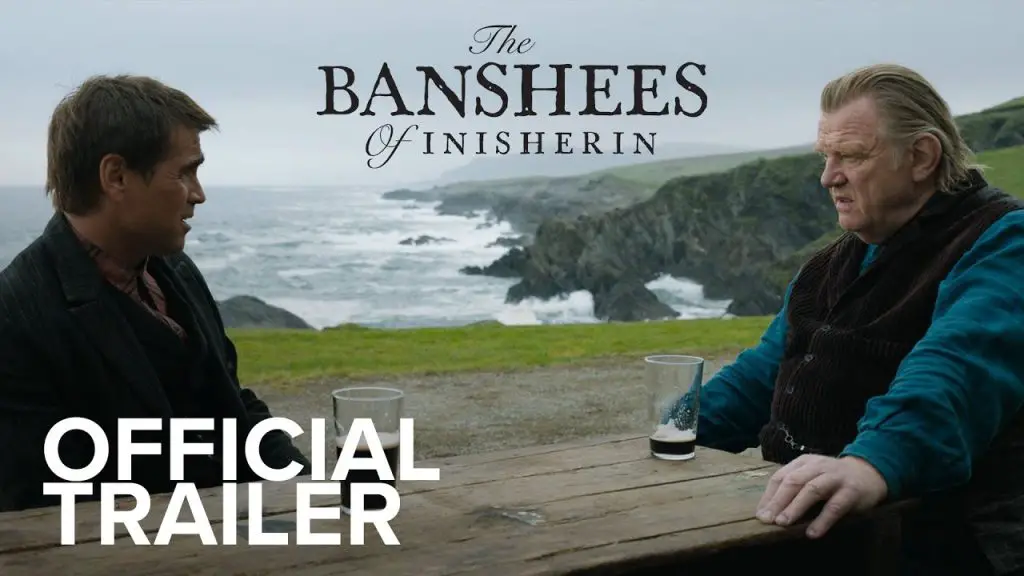The 95th Academy Awards (or the Oscars to you and me) are upon us. The annual event is often discussed in the mainstream media for its red carpet moments and star-studded guests. But we can’t forget that it is one of the oldest and most prestigious awards in the entertainment industry and ultimately a celebration of film and the power of great storytelling. There is also a clear trend amongst the Best Picture winners that has relevance for all storytellers.
It isn’t the box-office hits from the Marvel Cinematic Universe (MCU) or the ever-growing incarnations of Spiderman that are dominating nominations. Rather, it is the thought-provoking projects that tell meaningful stories and pull at audiences’ heart strings that are taking the acclaim, such as The Banshees of Inisherin (below) and Everything Everywhere All at Once. The stories that make us feel the struggles of growing old, the pain of crumbling friendships on a small remote island or the bitter sweetness of a family healing between an estranged mother and daughter (across multiverses).

The best movie makers are exemplars of empathy. They understand that emotional impact and relatability are the cornerstones of success on the silver screen – and the same features are essential for effective brand storytelling. The best advertising campaigns utilise characters, narratives and twists: all devices that prompt viewers to remember the story for years to come.
Look at John Lewis. Few ads generate such anticipation and conversation as the retailer’s Christmas campaigns. And this is because together with its agency John Lewis identified a winning recipe. From 2013’s animated ‘The Bear and the Hare’ to 2022’s ‘The Beginner’ which focussed on a new foster father, the brand’s marketers keep engaging plot lines at the forefront of the ads, with products taking a back seat. Where the ads go next with a new agency in the driving seat will generate much speculation this year.
But not everyone knows what best-in-class ads look like. So the question remains: what can advertisers learn from the power of storytelling in the film world?
Who’s stealing the show?
Titanic took the golden statuette home in 1997. 26 years later and there are still some people who can’t resist screaming “I’m the king of the world” the moment they step foot on a boat. The Godfather graced cinemas half a century ago – yet the titular character continues to be parodied to great effect.
Having an iconic character that is embedded in the zeitgeist can be an advertiser’s ticket to longevity. It doesn’t matter whether they divide opinions like Go.Compare’s Gio Compario – the brand mascot since 2009 – or if they’re universally loved like Churchill’s dog, which has evolved over time from its signature nodding to riding a skateboard. These clearly identifiable figures stay ingrained in your audience’s consciousness and build long-term recognition.
Keep your ear to the ground
As society evolves, and we aim for a greater level of equity and inclusion, cinema can reflect and lead that change. From Guess Who’s Coming to Dinner in the 60s with its portrayal of a mixed race relationship, to the award winning CODA – Child of Deaf Adults – with its moving performances and beautiful narrative, our shared cultural experiences open up new perspectives to audiences. Green Book was a resonant portrayal of how compassion, connection and shared experiences teach us more about how our perspectives, which can appear so different, can come to together.
In reflecting the audiences that we serve, in a way that resonates, rather than as a tick box, we create meaningful connections with consumers. Virgin Atlantic’s celebration of everyone’s right to be unique in “See the World Differently” took a snapshot of passengers and turned it into a celebration of individuality (and I have so much empathy for the girl who trips off the moving walkway, as that’s me at every airport, even when I’m not staring at fellow travellers).
Be authentic, know your audience and tell them a great story.
If it ain’t broke..
The same, but different, is the story of remakes. All Quiet on the Western Front – which swept the BAFTAS this year (though the Academy has a will of its own, so just expect the same result) was originally an award winner in 1930. This no doubt was resonant with an audience that had only seen war end 12 years before. For it to come out now, with war in Europe again, is a timing that ensures that, even if the techniques of film making have changed, the portrayal of conflict is always chilling and salutary.
So, never be afraid of refreshing a classic line. In using humour in a new approach to “this is not just food” M&S made a much-loved approach new again. We loved it, so they brought it back.
If there’s one thing we can learn from the top cinematic creators, it’s to know your audience and tell them your story. Enjoy the Oscars show if you’re tuning in – but also see what you can learn to help build your next campaign.

Kathryn Jacob OBE, CEO, Pearl & Dean, 22Feb18, ©BronacMcNeill
Kathryn Jacob is CEO of Pearl & Dean.
from Digital Marketing Education https://ift.tt/K7oW9ET
No comments:
Post a Comment